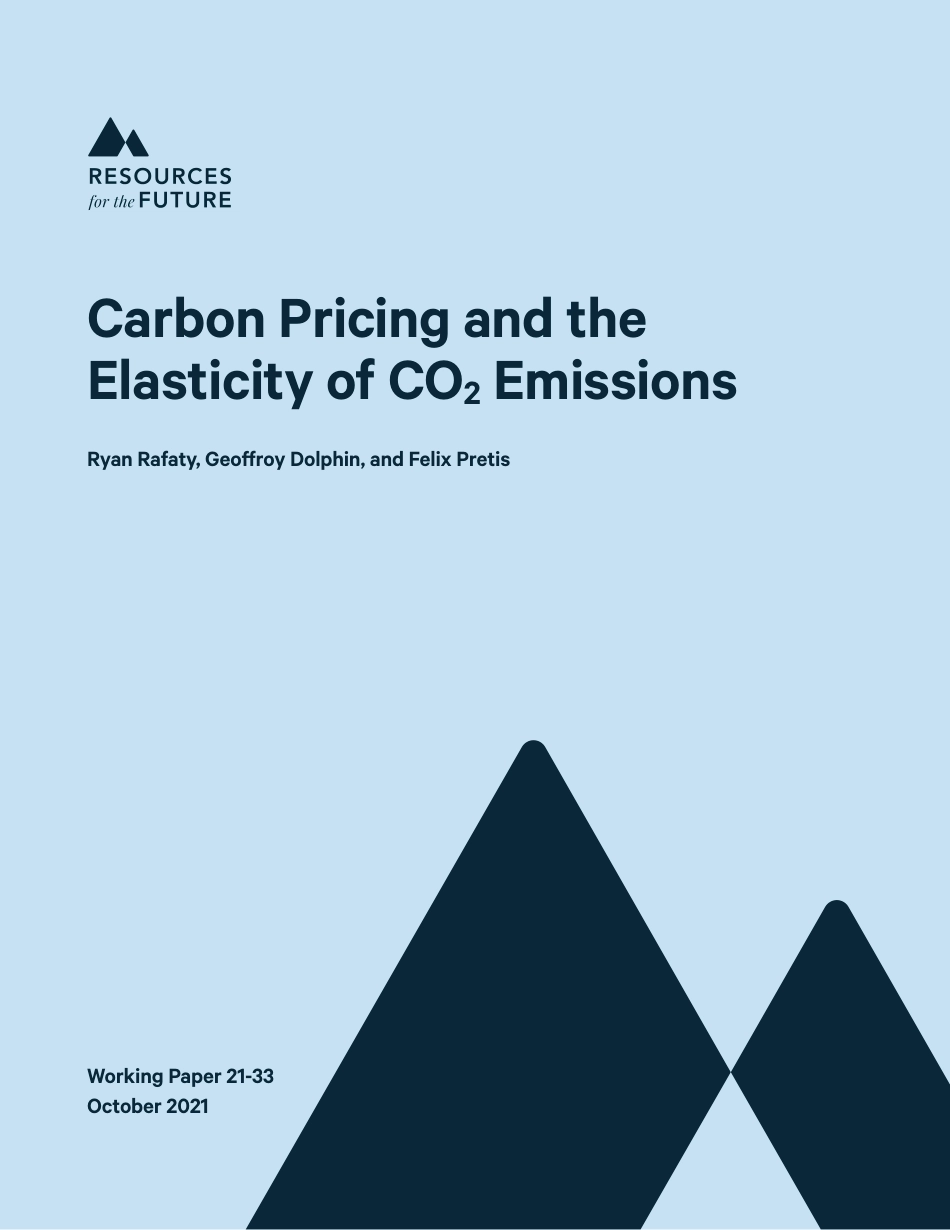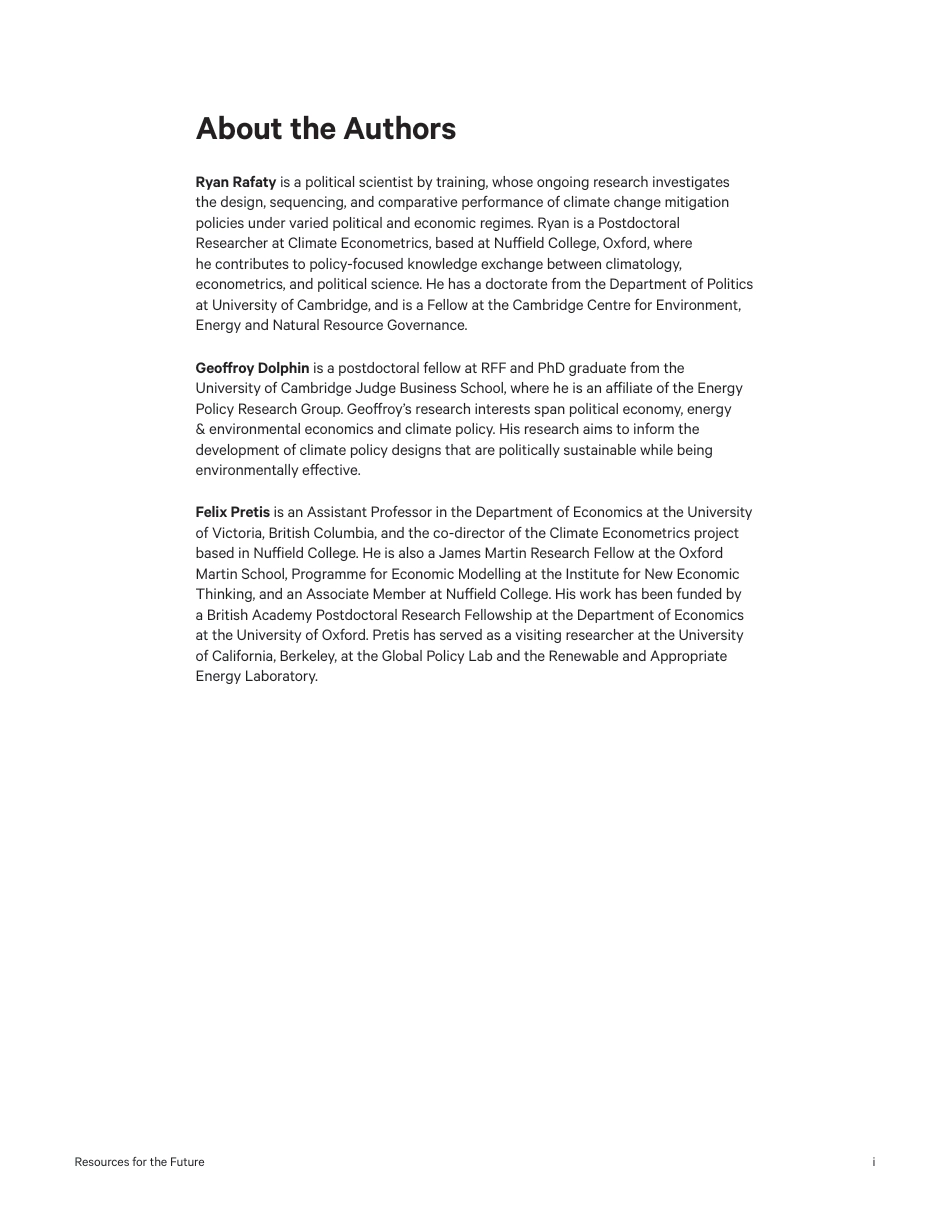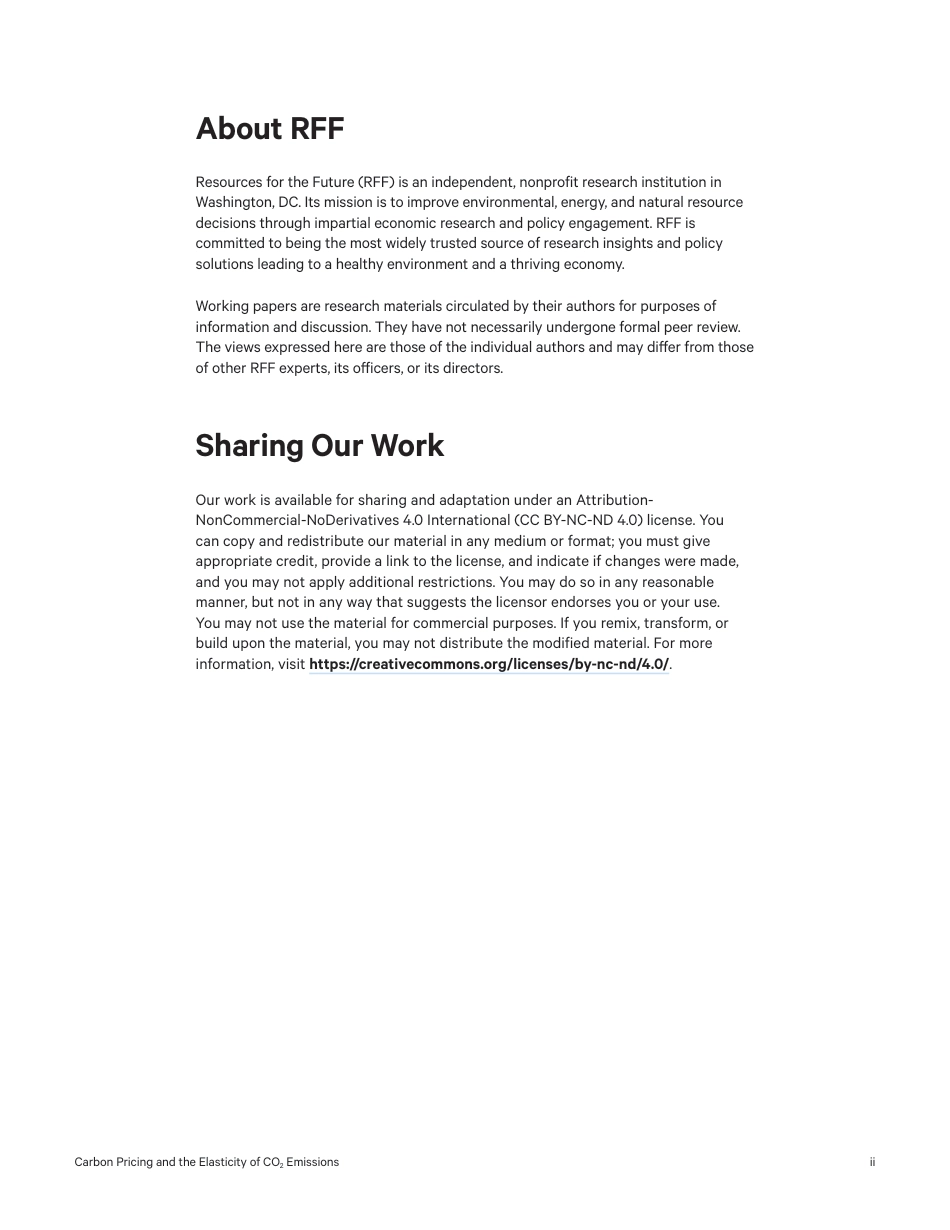Carbon Pricing and the Elasticity of CO2 EmissionsRyan Rafaty, Geoffroy Dolphin, and Felix PretisWorking Paper 21-33 October 2021Resources for the FutureiAbout the Authors Ryan Rafaty is a political scientist by training, whose ongoing research investigates the design, sequencing, and comparative performance of climate change mitigation policies under varied political and economic regimes. Ryan is a Postdoctoral Researcher at Climate Econometrics, based at Nuffield College, Oxford, where he contributes to policy-focused knowledge exchange between climatology, econometrics, and political science. He has a doctorate from the Department of Politics at University of Cambridge, and is a Fellow at the Cambridge Centre for Environment, Energy and Natural Resource Governance.Geoffroy Dolphin is a postdoctoral fellow at RFF and PhD graduate from the University of Cambridge Judge Business School, where he is an affiliate of the Energy Policy Research Group. Geoffroy’s research interests span political economy, energy & environmental economics and climate policy. His research aims to inform the development of climate policy designs that are politically sustainable while being environmentally effective.Felix Pretis is an Assistant Professor in the Department of Economics at the University of Victoria, British Columbia, and the co-director of the Climate Econometrics project based in Nuffield College. He is also a James Martin Research Fellow at the Oxford Martin School, Programme for Economic Modelling at the Institute for New Economic Thinking, and an Associate Member at Nuffield College. His work has been funded by a British Academy Postdoctoral Research Fellowship at the Department of Economics at the University of Oxford. Pre...



